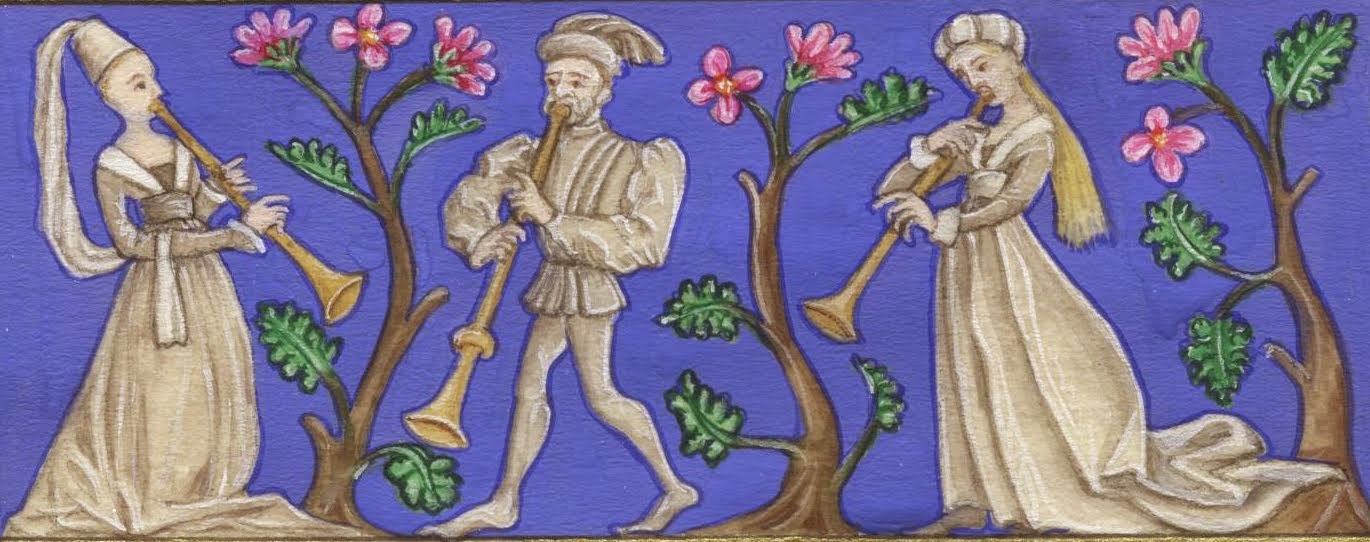However it does make me wonder what they played. Obviously the instruments are suitable for fanfares at key moments, such as entrances of important people, serving of food, and so on. But did they play more extended pieces as general entertainment? Did they provide 'background music' in the sense of relatively continuous performance that was not the main focus of attention? It is hard to imagine trumpets being suitable for this, partly due to being tiring to play at length, and also for volume, but then why not at a noisy feast? Did they play for dancing - are these the 'minstrels' described in the French romances who played as the nobles danced after feasting, and then stopped (tired out!) while the nobles continued to sing and dance?
And does the picture above actually show two trumpets and a shawm (the shorter instrument on the left, which now I look again, seems to be being held in a different way)? Could literary descriptions of 'trumpets' at feasts potentially refer to such mixed ensembles?


The instrument on the right not only looks shorter than the trumpet next to it, but it doesn't have a banner hanging from it. Did any other 14th century wind instruments have flared ends or was it just shawms and trumpets?
ReplyDeleteNB While I personally would prefer not to have a shawm directed at my ear while feasting, those nobles lucky enough to attain old age may well have preferred it to quieter instruments - after all there were no hearing aids back then.
Yes, I'm actually quite convinced it is a shawm, and have found a bit more info about the shawm/trumpet combination in this period, which I will discuss in another post. I can't think of another likely instrument that would both have that shape and be audible with two trumpets.
DeleteHave you seen the illustration of the Sun and his Children by the 15th century 'Master of the Housebook'? Three musicians with what looks like 2 shawms and a trumpet - there's also a boy watching them with a lute tucked under one arm and a drum in his other hand. http://en.wikipedia.org/wiki/Master_of_the_Housebook
DeleteYes, although this is a 15th century S-shaped trumpet - possibly even a 'slide' trumpet which is pretty much the well known shawm and sackbut combo. But I'm interested to work out how common it was to have one or two 'basic' straight trumpets playing along with a shawm in the 14th century (or alternatively, how many pictures of 'trumpeters' in this period are actually pictures of some trumpets plus a shawm) as this seems significant to understand what music was being played.
Delete